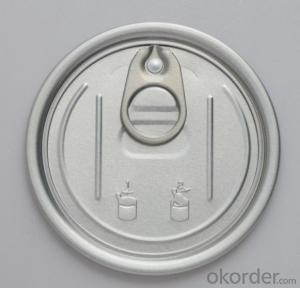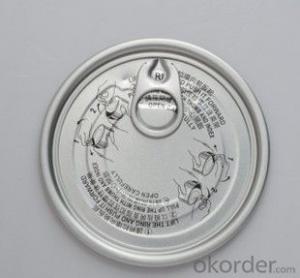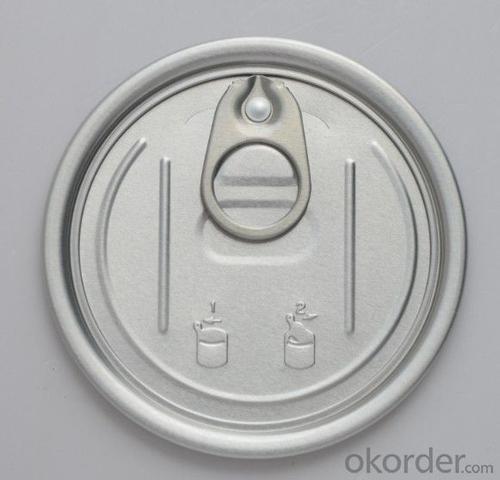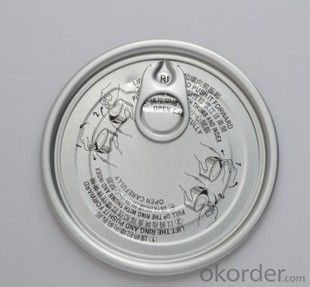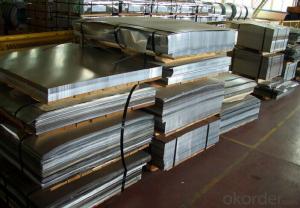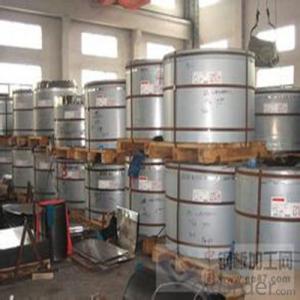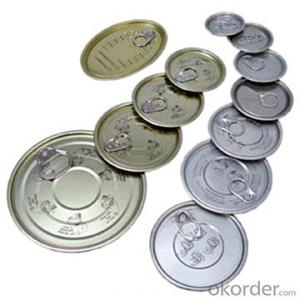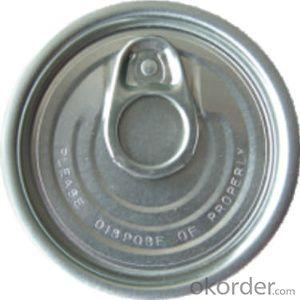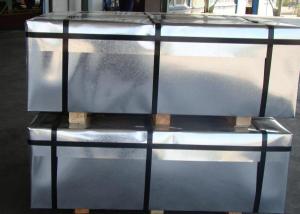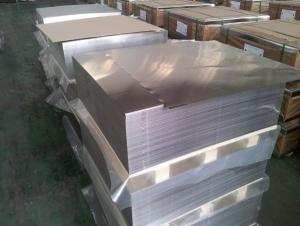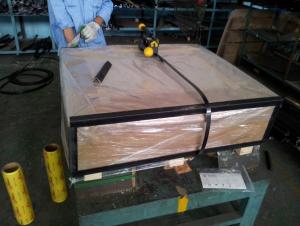High Quality EOE 502, Alumnium Material
- Loading Port:
- China main port
- Payment Terms:
- TT OR LC
- Min Order Qty:
- 1000000 PCS
- Supply Capability:
- 10000000 PCS/month
OKorder Service Pledge
OKorder Financial Service
You Might Also Like
Detailed Specification:
502 aluminum bottom lid
diameter:outer diameter:136.7+/-0.1mm
iner diameter:126.5+/-0.1mm
used for packing dry food,such as milk powder.
package:1200pcs/ctn
bottom lid.packing ,food packaging,lid, easy open end,tennis lid,
Can lid,Easy opener,EOE,eoe,End cap,
Bottle lid,Tinplate can,
Our packing
We could offer package as customers require, by carton or by wooden pallet.
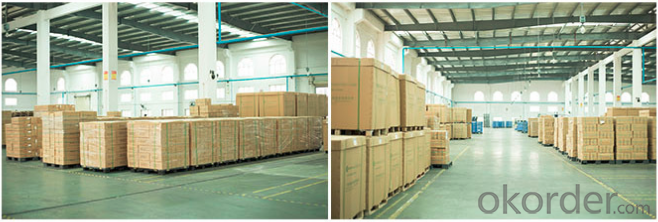
Our Workshop
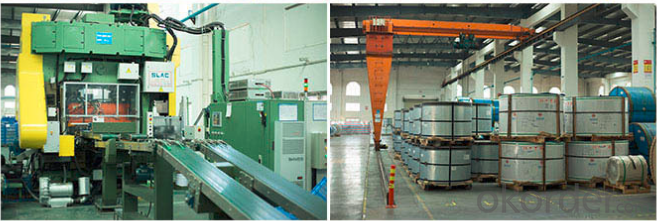
FAQ
1.Q: What is the material of EOE?
We can offer both tinplate and aluminum material made EOE;
2.Q:Could you offer samples for our testing?
YES, we could offer sampler for free if needed;
3. Q:Can you make new mold with customized size I need?
YES, We can make mold for you if reach some qty.
- Q: How is tinplate tested for corrosion resistance?
- Tinplate is tested for corrosion resistance through various methods, including salt spray testing, electrochemical impedance spectroscopy, and weight loss analysis. These tests evaluate the ability of tinplate to withstand exposure to corrosive environments and provide insights into its protective properties.
- Q: What are the food safety regulations for tinplate packaging?
- The food safety regulations for tinplate packaging vary depending on the country and region. However, in general, tinplate packaging must meet certain standards to ensure the safety of the food inside. These standards typically include requirements for the quality of the tinplate material, such as being free from contaminants and durable enough to prevent leaks or damage. Additionally, regulations may cover aspects like the use of food-grade coatings on the tinplate, proper labeling and identification of the packaging, and compliance with hygiene and sanitation practices during the manufacturing process.
- Q: How does tinplate contribute to the overall sustainability of the supply chain?
- Tinplate contributes to the overall sustainability of the supply chain by offering several environmental benefits. Firstly, tinplate is highly recyclable, allowing for the continuous reuse of the material without any loss of quality. This reduces the need for virgin materials and minimizes waste generation. Secondly, tinplate provides excellent protection and preservation properties, extending the shelf life of products and reducing food waste. Additionally, tinplate is lightweight, which helps in optimizing transportation efficiency, reducing fuel consumption, and lowering carbon emissions. Overall, tinplate's recyclability, protective qualities, and lightweight nature make it a sustainable choice that positively impacts the entire supply chain.
- Q: How does tinplate handle exposure to chemicals and solvents?
- Tinplate is generally resistant to exposure to chemicals and solvents due to its protective tin coating, which acts as a barrier against corrosion and chemical reactions. This makes tinplate a reliable choice for packaging and storing various products that may come into contact with different chemicals and solvents.
- Q: How is tinplate used in the production of aerosol valves?
- Tinplate is used in the production of aerosol valves as it provides a durable and corrosion-resistant material for the valve components. It helps to maintain the integrity of the valve, ensuring a reliable and leak-proof seal. Additionally, tinplate can be easily formed into intricate shapes, allowing for the precise design and functionality required in aerosol valves.
- Q: Can tinplate be used for non-packaging applications?
- Yes, tinplate can be used for non-packaging applications. Tinplate's excellent corrosion resistance, ductility, and formability make it suitable for various non-packaging uses such as automotive parts, construction materials, electrical components, and decorative purposes.
- Q: What are the main factors influencing the growth of the tinplate market?
- The main factors influencing the growth of the tinplate market include increasing demand for packaged food and beverages, the growth of the automotive industry, rising consumer awareness about sustainable packaging, and advancements in tinplate manufacturing technologies. Additionally, factors such as changing lifestyles, urbanization, and the need for lightweight and durable packaging solutions are also driving the growth of the tinplate market.
- Q: How is tinplate tested for quality and performance?
- Tinplate is tested for quality and performance through various methods such as visual inspection, thickness measurement, adhesion testing, corrosion resistance evaluation, and mechanical property analysis. Visual inspection involves assessing the surface for any defects or irregularities. Thickness measurement ensures the tin coating meets the required standards. Adhesion testing checks the bond strength between the tin and base metal. Corrosion resistance evaluation examines the tinplate's ability to withstand corrosion. Mechanical property analysis includes tests for strength, hardness, ductility, and formability to ensure it meets the desired performance requirements.
- Q: What are the main regulations governing the use of tinplate in different industries?
- The main regulations governing the use of tinplate in different industries vary depending on the country or region. However, some common regulations include health and safety standards, environmental regulations, and product labeling requirements. These regulations aim to ensure the safe and responsible use of tinplate in industries such as food packaging, automotive, construction, and electronics.
- Q: How can the section of the tinplate be maintained without rust?
- The cross section of the tinplate is free of rust. Both sides have plating, the cross section can use lubricating oil
Send your message to us
High Quality EOE 502, Alumnium Material
- Loading Port:
- China main port
- Payment Terms:
- TT OR LC
- Min Order Qty:
- 1000000 PCS
- Supply Capability:
- 10000000 PCS/month
OKorder Service Pledge
OKorder Financial Service
Similar products
Hot products
Hot Searches
Related keywords
